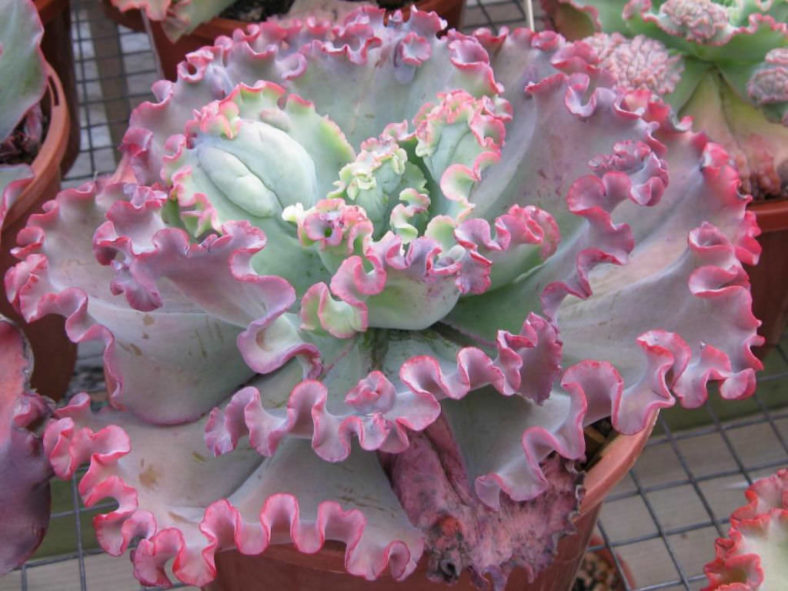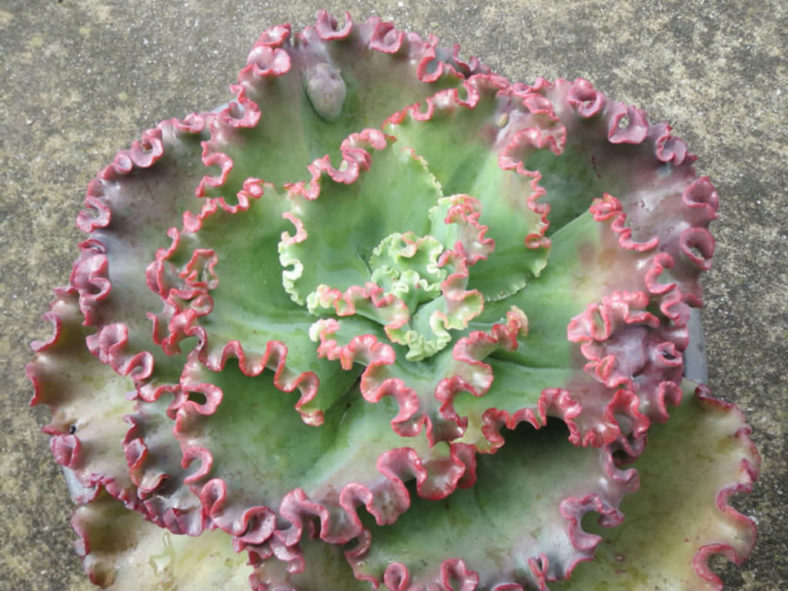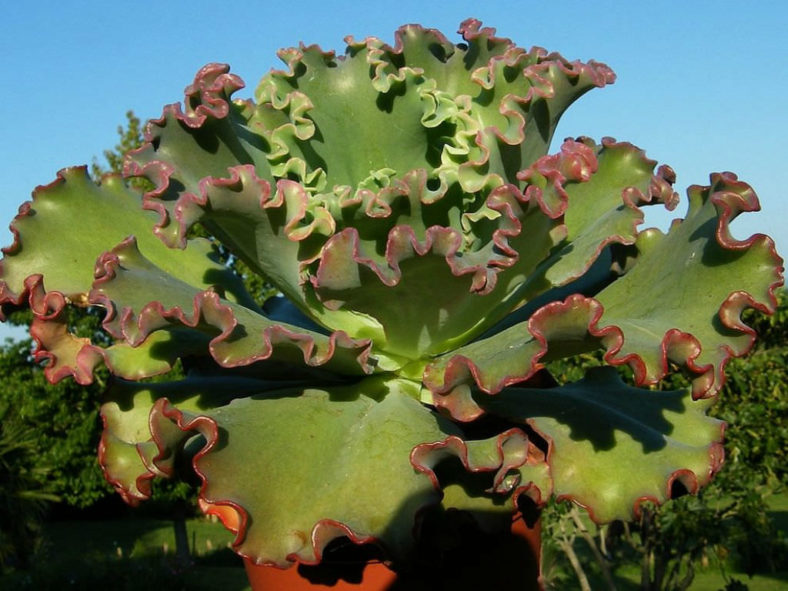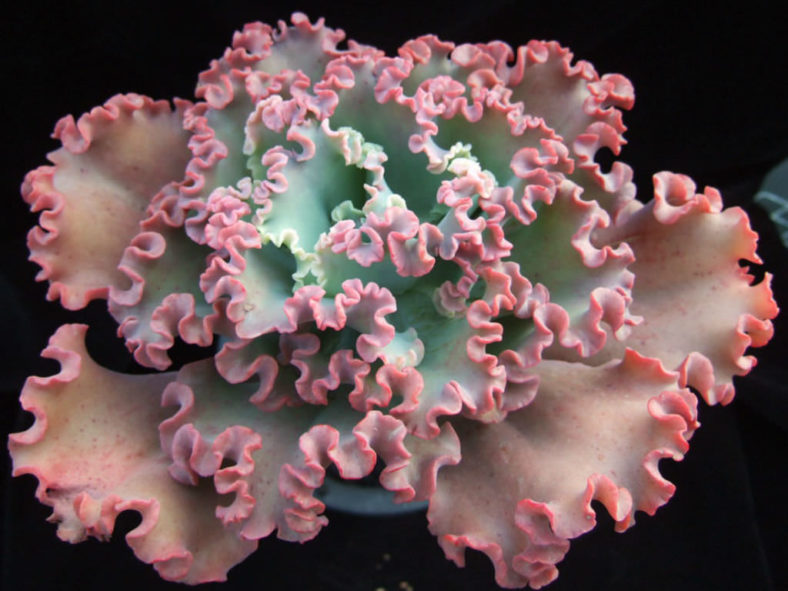Scientific Name
Echeveria 'Can Can'
Scientific Classification
Family: Crassulaceae
Subfamily: Sempervivoideae
Tribe: Sedeae
Genus: Echeveria
Origin
Echeveria 'Can Can' is a hybrid created by Dick Wright. The parentage is unknown.
Description
Echeveria 'Can Can' is a succulent plant that forms a large rosette of stout, fleshy leaves. The rosette can reach up to 14 inches (35 cm) in diameter. The leaves change color from copper-green to brown-violet when older. They are covered with a powdery bloom and have red ruffled margins.
The flowers are reddish-pink and usually appear in summer.

How to Grow and Care for Echeveria 'Can Can'
Soil: Echeverias need a potting soil mix that drains quickly. Many growers will create their own mix. However, commercial cactus and succulent potting soil will work fine.
Light: These succulents prefer full sun to partial shade. However, avoid drastic sunlight changes and full afternoon sun, especially in summer. During the winter, when your succulents are inside, put them near the brightest window in your home.
Hardiness: Echeveria 'Can Can' can withstand temperatures as low as 25 to 50 °F (-3.9 to 10 °C), USDA hardiness zones 9b to 11b.
Watering: When and how to water is crucial to Echeveria care. They do not like to be kept too wet, but they also do not like to be kept too dry. The "soak and dry" method is the preferred schedule for watering Echeverias.
Fertilizing: Echeverias grow well without fertilizer but may benefit from the extra nutrients.
Repotting: Repot when needed in the spring or early summer.
Propagation: Echeverias are one of the easiest succulents to propagate. They are usually propagated from offsets or leaves but can also be grown from stem cuttings and seeds.
Learn more at How to Grow and Care for Echeveria.
Toxicity of Echeveria 'Can Can'
Echeverias are safe around pets and humans, although it is not advisable to eat them.
Links
- Back to genus Echeveria
- Succupedia: Browse succulents by Scientific Name, Common Name, Genus, Family, USDA Hardiness Zone, Origin, or cacti by Genus
Photo Gallery


